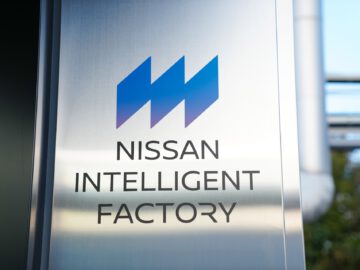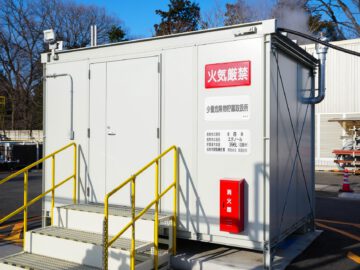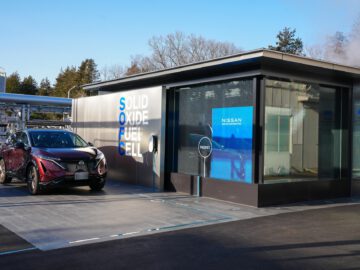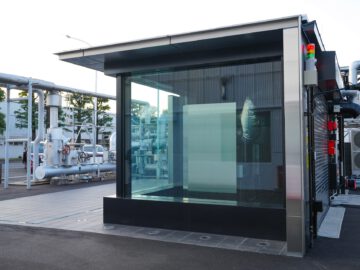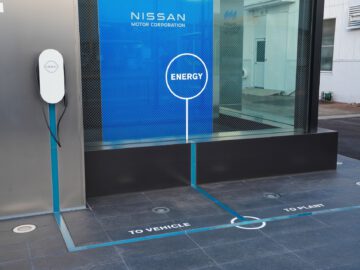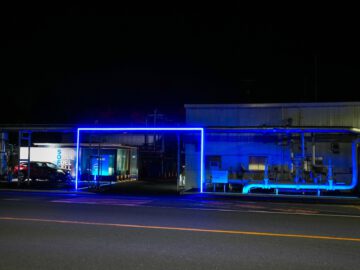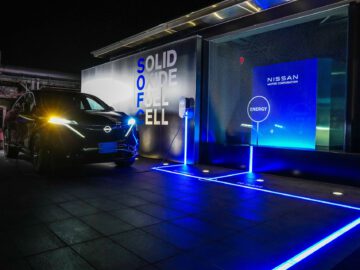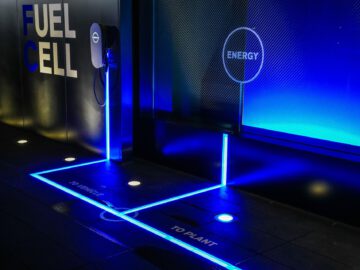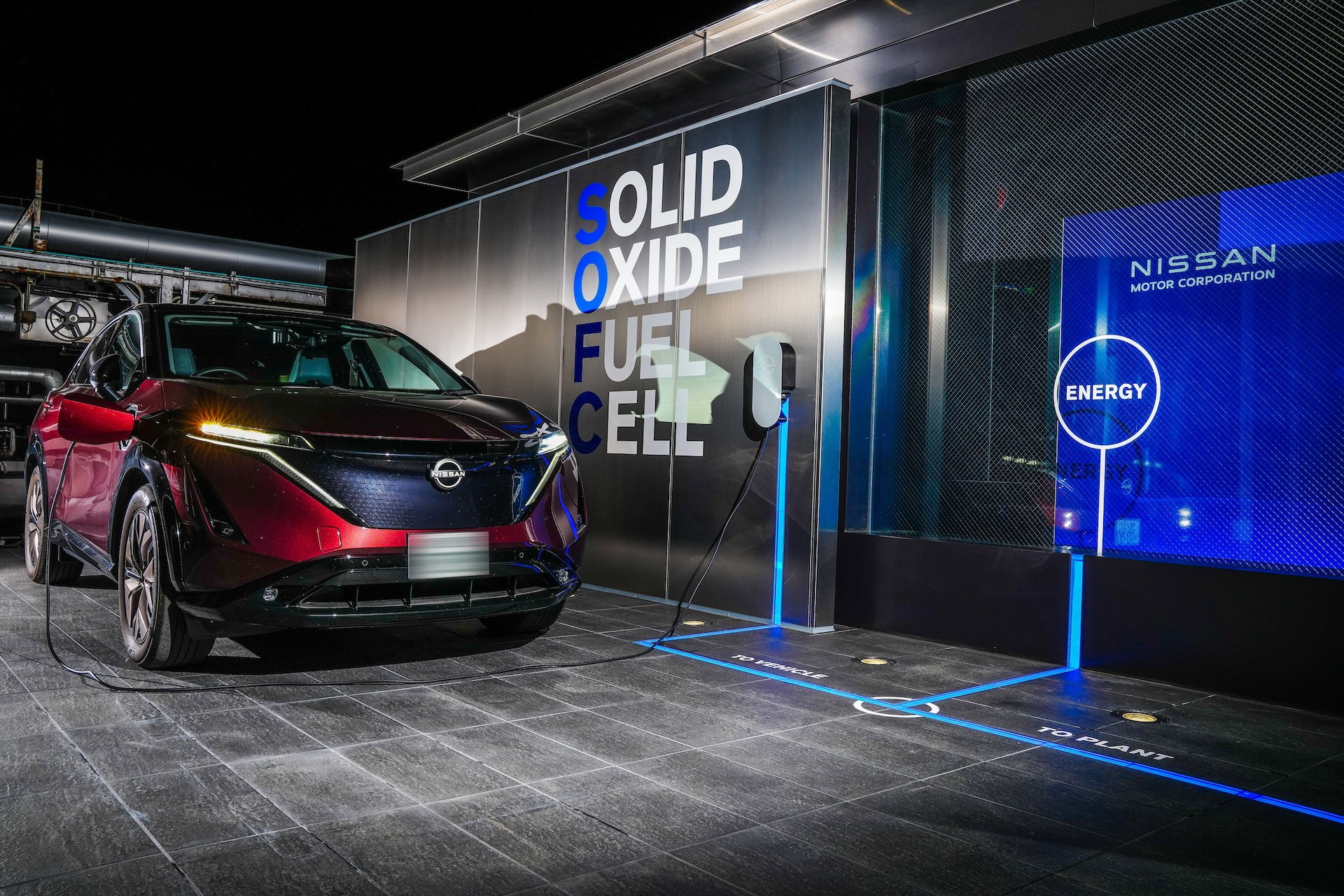Nissan sees future in bioethanol power generation system
Characteristics of SOFC
In 2016, Nissan was the first manufacturer in the world to present a driving prototype powered by a solid oxide fuel cell (SOFC, Solid Oxide Fuel-Cell) running on bioethanol. This technology is now being used to develop new, sustainable and efficient power generation systems.
SOFCs can be easily combined with reformers. These operate at high temperatures and can generate electricity using hydrogen. Hydrogen is obtained by reforming various fuels that react with oxygen, including ethanol, natural gas and LPG. The reaction promotes high catalytic activity, allowing the SOFC to achieve efficiencies of up to 70% compared to 60% when using solid-polymer fuel cells (PEFC, Polymer Electrolyte Fuel Cell).
In addition, the development of a metal-assisted cell – a component of the SOFC stack – will help improve cell strength. As a result, startup and shutdown times can be reduced and fluctuations in power demand can be responded to. This will make SOFC systems work more efficiently, especially when combined with renewable energy.

Procurement of raw sorghum bioethanol
The stationary power generation system is powered by bioethanol extracted from the grain sorghum (sorghum bioethanol), which is produced in cooperation with Binex Inc. was developed and where the fuel is purchased from Binex.
This component will start from 2025. TheCO2 released from the sorghum bioethanol during power generation in a SOFC is absorbed from the atmosphere during the sorghum growth process, contributing to the realization of a carbon-neutral cycle whereCO2 increases are effectively reduced to zero.
Characteristics of sorghum
- Herbaceous plant of the grass family that grows quickly and can be harvested in about three months. This allows multiple harvests per year if grown under suitable conditions.
- Sorghum can be grown in a wide range of regions and on different soils due to its adaptability to cold and dry conditions.
- The stem is used as feedstock for ethanol and the grain is used for food, meaning there is no competition with food production.
- After pressing, the remnant of the stem can be used as feedstock in biomass plants.
Major changes
Kazuhiko Murata, corporate vice president in charge of Powertrain Production Engineering and Development, said, “Major changes are taking place in the transition from the internal combustion engine to electric vehicles. Nissan does not shy away from technology development challenges, and power generation with SOFC technology is one of our strengths. We will continue to contribute to the promotion of electrification and carbon neutrality efforts with unique and innovative Nissan technologies.”
Renewable energy sources
Nissan aims for carbon neutrality in all business activities and throughout the life cycle of its products by 2050. The goal is also to fully electrify the plant by then by introducing innovative production technologies and reducing energy consumption. To achieve carbon neutrality in the production facilities, all electricity used will have to be generated from renewable energy sources or generated on site with fuel cells using alternative fuels.

